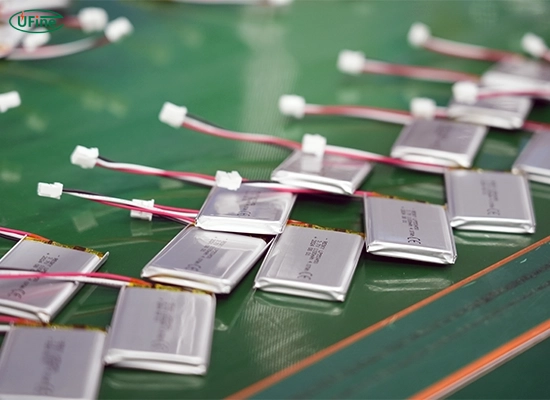In today’s technologically advanced world, batteries are pivotal in powering our devices, vehicles, and homes. With the emergence of smart batteries, consumers and businesses face a choice: should they opt for traditional batteries or invest in smart ones? This article delves into the distinctions between these two types of batteries, exploring their features, benefits, and applications.
Part 1. What is a smart battery?
A smart battery is an advanced type incorporating an internal electronic circuit and sensors to monitor and manage performance. These batteries optimize their functionality and lifespan through various control and protection mechanisms.
Key Features of Smart Batteries
- Internal Monitoring: Smart batteries have built-in sensors that detect voltage, current levels, and other parameters such as temperature and state of charge.
- Balancing Circuit: This circuit charges and discharges all cells within the battery evenly, preventing imbalances that could reduce the battery’s overall capacity and lifespan.
- Protective Circuit Module (PCM) protects the battery from high/low voltages and currents during charging and discharging.
- Battery Management System (BMS): The BMS includes all the functionalities of the balancing circuit and PCM, along with additional features for optimizing battery performance over its entire life, such as monitoring the state of health and state of charge.
Advantages of Smart Batteries
Here are some of the key benefits of using smart batteries:
- Longer Lifespan: Advanced management systems prevent damage from overcharging, deep discharging, and overheating, extending battery life.
- Optimized Charging: Efficient charging reduces time and improves overall performance.
- Enhanced Safety: Built-in protection circuits and temperature sensors prevent overcharging, deep discharging, and overheating.
- Cell Balancing: Balancing circuits ensure even charge and discharge, preventing imbalances.
- Battery Management System (BMS): Monitors and optimizes battery performance, ensuring efficient operation.
Disadvantages of Smart Batteries
Smart batteries have some drawbacks:
- Higher Cost: Generally more expensive upfront and for replacement than regular batteries.
- Complexity: Often requires special chargers and monitoring equipment, adding to overall cost and complexity.
- Potential for Malfunctions: Advanced components may malfunction and need professional repair or replacement.
Use cases for smart batteries
Smart batteries are ideal for applications that require high performance, safety, and efficiency:
- Electric Vehicles: Electric vehicles commonly use smart batteries due to their long lifespan, efficient charging, and advanced safety features.
- Medical Equipment: Medical devices use these batteries where reliability and safety are critical.
- Laptops and Smartphones: Smart batteries are used in laptops and smartphones to provide long battery life and efficient charging.
- Portable Devices: These batteries are ideal for portable devices that require reliable power and advanced safety features.
Part 2. How do smart batteries work?
Smart batteries use internal circuits and sensors to manage and optimize their performance. Here’s a breakdown of the process:
Internal Monitoring and Management
- Voltage and Current Monitoring: Sensors continuously monitor the voltage and current levels to ensure they remain within safe limits.
- Temperature Control: Temperature sensors prevent the battery from overheating, which can cause damage or reduce its lifespan.
- Balancing Cells: The balancing circuit charges and discharges all cells within the battery evenly, preventing imbalances that could lead to reduced capacity and lifespan.
Protection Mechanisms
- Overcharge and Over-discharge Protection: The PCM prevents the battery from being overcharged or deeply discharged, which can damage the cells.
- Short Circuit Protection: The battery prevents short circuits, which can cause overheating and potential hazards.
Performance Optimization
- Battery Management System (BMS): The BMS optimizes the battery’s performance by monitoring its health and charge state, ensuring it operates efficiently throughout its lifespan.
Part 3. What is a regular battery?
A regular battery typically refers to standard batteries like alkaline or lead-acid batteries, which do not have smart batteries’ advanced monitoring and management features. These batteries are designed for straightforward applications and provide power without internal electronic controls.
Key Features of Regular Batteries
- Simple Design: Regular batteries are straightforward in design. They often consist of basic chemical cells that generate power through chemical reactions.
- No Internal Monitoring: These batteries lack internal sensors and circuits for monitoring performance or protecting against overcharging and deep discharging.
- Common Types: Examples include alkaline batteries used in household items and lead-acid batteries used in vehicles.
Advantages of Regular Batteries
Here are some benefits of using regular batteries:
- Simplicity: Easy to use without the need for special handling or monitoring.
- Availability: Widely available in various sizes and types for diverse applications.
- Cost-Effective: Generally less expensive than smart batteries and do not require special chargers.
Disadvantages of Regular Batteries
Regular batteries have some drawbacks:
- Shorter Lifespan: Typically have a shorter life, especially with frequent overcharging or deep discharging.
- Less Efficient Charging: Charge less efficiently, leading to longer charging times.
- Limited Safety Features: The product lacks internal protection and balancing circuits, making it more prone to damage and imbalances.
Use cases for regular batteries
Regular batteries are suitable for straightforward applications that do not require advanced features:
- Remote Controls: Remote controls commonly use regular batteries due to their simplicity and cost-effectiveness.
- Toys and Flashlights: These batteries are ideal for toys and flashlights, providing reliable power without needing advanced monitoring.
- Standard Vehicles: Regular lead-acid batteries are commonly used to provide the power needed to start the engine.
Part 4. How do regular batteries work?
Regular batteries operate through simple chemical reactions that generate electrical energy. Here’s a closer look at the process:
Chemical Reactions
- Electrolyte Reaction: In a lead-acid battery, for example, the electrolyte reacts with lead plates to create ions, which generate electricity.
- Energy Generation: The movement of ions between the cathode and anode produces the electricity needed to power devices.
Lack of Advanced Features
- No Internal Monitoring: Regular batteries do not have sensors or circuits to monitor their performance or protect against overcharging and deep discharging.
- Simple Protection: These batteries rely on external devices or user intervention to prevent overcharging and deep discharging.
Part 5. Comparing smart batteries vs. regular batteries
When choosing between smart batteries and regular batteries, it’s essential to understand their key differences. Here’s a clear comparison:
Technology and Features
Smart Batteries:
- Integrated Management System: Smart batteries have built-in management systems that monitor their health and performance.
- Real-time Data: They provide real-time information about charge levels, temperature, and overall status.
- Self-Diagnostics: Smart batteries can perform self-checks and report issues before they become critical.
- Communication: They often feature communication protocols that allow them to interface with other devices, enhancing their utility.
Regular Batteries:
- Basic Functionality: Regular batteries do not have advanced management systems. They provide power without extra features.
- No Real-time Monitoring: They cannot offer real-time data or performance metrics.
- Manual Checking: Users must manually check their status and health, which can be less convenient and may lead to unexpected failures.
Performance and Efficiency
Smart Batteries:
- Optimized Charging: They use algorithms to optimize charging cycles, which can extend their lifespan.
- Better Efficiency: Smart batteries often have higher efficiency rates due to their advanced management features.
- Adaptive Usage: They adjust performance based on usage patterns, ensuring better energy management.
Regular Batteries:
- Fixed Charging Cycles: Charging is less optimized, which may lead to quicker degradation over time.
- Standard Efficiency: Efficiency is generally lower, as no system adjusts performance based on usage.
- Consistent Usage: They operate at a fixed performance level without adaptation to changing conditions.
Maintenance and Longevity
Smart Batteries:
- Low Maintenance: The management system helps reduce maintenance needs by alerting users to potential issues.
- Longer Lifespan: Smart batteries typically last longer due to optimized charging and performance management.
- Predictive Alerts: They offer predictive alerts about maintenance needs, which helps in preventing unexpected failures.
Regular Batteries:
- Higher Maintenance: Regular batteries require more frequent manual checks and maintenance.
- Shorter Lifespan: Without optimized management, they may degrade faster and need replacement sooner.
- No Predictive Maintenance: Users must rely on periodic inspections and may face unexpected failures.
Cost and Investment
Smart Batteries:
- Higher Initial Cost: They generally cost more upfront due to advanced technology and features.
- Cost-effective Over Time: Despite the higher initial cost, they can be more cost-effective in the long run due to longer lifespan and reduced maintenance.
Regular Batteries:
- Lower Initial Cost: They are typically less expensive initially.
- Potential Higher Long-term Cost: The long-term costs might be higher due to shorter lifespan and higher maintenance needs.
Applications
Smart Batteries:
- Advanced Applications: Ideal for applications where real-time monitoring and optimized performance are critical, such as in renewable energy systems or high-tech devices.
- Integration with Smart Devices: Perfect for integration with other smart technology systems.
Regular Batteries:
- Standard Applications: It is suitable for general use where advanced features are unnecessary, such as in household items or simple electronic devices.
Part 6. FAQs
-
What is the main difference between a smart battery and a regular battery?
The main difference is that smart batteries have internal electronic circuits and sensors for monitoring and managing performance, while regular batteries do not. -
Are smart batteries more expensive than regular batteries?
Smart batteries are generally more expensive due to their advanced features and internal components. -
Can I use a regular charger for a smart battery?
Smart batteries often require special chargers designed to work with their internal monitoring and management systems. -
Do smart batteries last longer than regular batteries?
Smart batteries typically have a longer lifespan due to their advanced monitoring and management features that prevent damage from overcharging, deep discharging, and overheating. -
Are regular batteries suitable for high-performance devices?
No, regular batteries are not ideal for high-performance devices. They lack the advanced features and safety mechanisms found in smart batteries.
Related Tags:
More Articles

High‑Capacity 3S LiPo Batteries: 5000 mAh vs. 10000 mAh
Compare 3S LiPo 5000mAh vs 10000mAh batteries by weight, power, and use. Find the best fit for your drone, RC car, or boat setup.
Top 5 Applications for Small 3S LiPo Batteries
Small 3S LiPo batteries power drones, RC gear, wearables, and robotics with high energy and low weight. Making them ideal for compact electronics projects.
Building and Charging Your Own 3S LiPo Pack: A Step‑by‑Step Guide
Learn how to build, balance, and charge a 3S LiPo battery pack safely at home with this complete DIY guide for hobbyists and beginners.
How to Choose the Right LiPo Battery Plug Type?
Discover the best LiPo battery plug types, how to choose them, and expert tips for safe usage, soldering, and maintenance.
Choosing the Right Connector for Your 3S LiPo Battery
Choosing the right 3S LiPo connector depends on current, space, and use. Learn the pros and cons of XT60, JST, EC3, and more.





